 W
WOrnithology is a branch of zoology that concerns the "methodological study and consequent knowledge of birds with all that relates to them". Several aspects of ornithology differ from related disciplines, due partly to the high visibility and the aesthetic appeal of birds. It has also been an area with a large contribution made by amateurs in terms of time, resources, and financial support. Studies on birds have helped develop key concepts in biology including evolution, behaviour and ecology such as the definition of species, the process of speciation, instinct, learning, ecological niches, guilds, island biogeography, phylogeography, and conservation. While early ornithology was principally concerned with descriptions and distributions of species, ornithologists today seek answers to very specific questions, often using birds as models to test hypotheses or predictions based on theories. Most modern biological theories apply across life forms, and the number of scientists who identify themselves as "ornithologists" has therefore declined. A wide range of tools and techniques are used in ornithology, both inside the laboratory and out in the field, and innovations are constantly made.
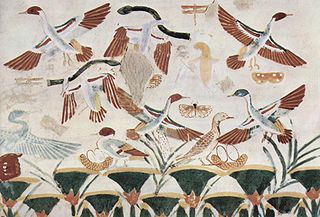 W
WThe following is a timeline of ornithology events:
 W
WBirds described in 1873 include the white-browed tit-warbler, Bartlett's tinamou, Von Schrenck's bittern, Raggiana bird-of-paradise, spangled coquette, Sangihe hanging parrot and the white-crowned penduline tit.
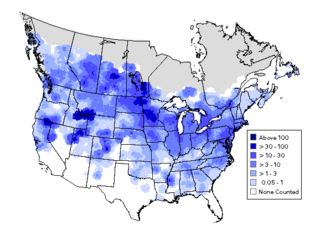 W
WA bird atlas is an ornithological work that attempts to provide information on the distribution, abundance, long-term change as well as seasonal patterns of bird occurrence and make extensive use of maps. They often involve a large numbers of volunteers to cover a wide geographic area and the methods used are standardized so that the studies can be continued in the future and the results remain comparable. In some cases the species covered may be restricted to those that breed or are resident. Migration atlases on the other hand cover migratory birds depict maps showing summaries of ringing and recoveries.
 W
WBird collections are curated repositories of scientific specimens consisting of birds and their parts. They are a research resource for ornithology, the science of birds, and for other scientific disciplines in which information about birds is useful. These collections are archives of avian diversity and serve the diverse needs of scientific researchers, artists, and educators. Collections may include a variety of preparation types emphasizing preservation of feathers, skeletons, soft tissues, or (increasingly) some combination thereof. Modern collections range in size from small teaching collections, such as one might find at a nature reserve visitor center or small college, to large research collections of the world's major natural history museums, the largest of which contain hundreds of thousands of specimens. Bird collections function much like libraries, with specimens arranged in drawers and cabinets in taxonomic order, curated by scientists who oversee the maintenance, use, and growth of collections and make them available for study through visits or loans.
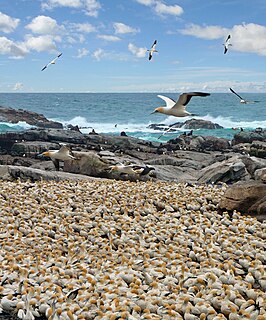 W
WA bird colony is a large congregation of individuals of one or more species of bird that nest or roost in proximity at a particular location. Many kinds of birds are known to congregate in groups of varying size; a congregation of nesting birds is called a breeding colony. Colonial nesting birds include seabirds such as auks and albatrosses; wetland species such as herons; and a few passerines such as weaverbirds, certain blackbirds, and some swallows. A group of birds congregating for rest is called a communal roost. Evidence of colonial nesting has been found in non-neornithine birds (Enantiornithes), in sediments from the Late Cretaceous (Maastrichtian) of Romania.
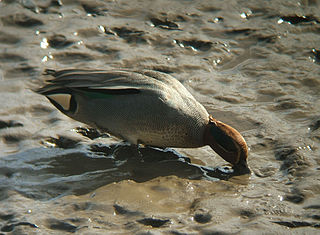 W
WBird ichnology is the study of avian life traces in ornithology and paleontology. Such life traces can include footprints, nests, feces and coproliths. Scientists gain insight about the behavior and diversity of birds by studying such evidence.
 W
WThe difficulty of defining or measuring intelligence in non-human animals makes the subject difficult to study scientifically in birds. In general, birds have relatively large brains compared to their head size. The visual and auditory senses are well developed in most species, though the tactile and olfactory senses are well realized only in a few groups. Birds communicate using visual signals as well as through the use of calls and song. The testing of intelligence in birds is therefore usually based on studying responses to sensory stimuli.
 W
WBird migration is the regular seasonal movement, often north and south along a flyway, between breeding and wintering grounds. Many species of bird migrate. Migration carries high costs in predation and mortality, including from hunting by humans, and is driven primarily by availability of food. It occurs mainly in the northern hemisphere, where birds are funneled on to specific routes by natural barriers such as the Mediterranean Sea or the Caribbean Sea.
 W
WBird trapping techniques to capture wild birds include a wide range of techniques that have their origins in the hunting of birds for food. While hunting for food does not require birds to be caught alive, some trapping techniques capture birds without harming them and are of use in ornithology research. Wild birds may also be trapped for their display in captivity in zoological gardens or for keeping as a pet. Bird trapping was formerly unregulated, but to protect bird populations most countries have specific laws and regulations.
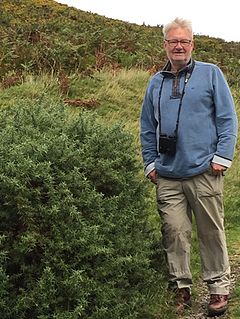 W
WJohn Cragg Callion is an award-winning British ornithologist. His 25-year study of the European stonechat and his findings on the Eurasian dotterel have revealed much previously unknown information about both species.
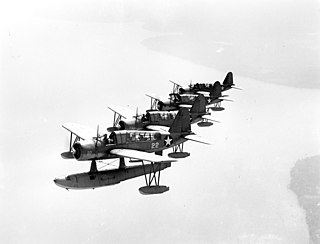 W
WAn echelon formation is a formation in which its units are arranged diagonally. Each unit is stationed behind and to the right, or behind and to the left, of the unit ahead. The name of the formation comes from the French word échelon, meaning a rung of a ladder, which describes the shape that this formation has when viewed from above or below.
 W
WAn Emlen funnel is a bird cage shaped like an inverted cone, used to study bird behaviour, in particular birds' migratory instincts. It is named after S T and J T Emlen who introduced the technique in 1966. An ink pad is placed on the bottom, so when the bird hops or flutters onto the sloping walls it leaves a track before slipping back down again. The bird's view through the top of the cage can be manipulated to show how it responds to different apparent "star patterns".
 W
WFledging is the stage in a flying animal's life between hatching or birth and becoming capable of flight. This term is most frequently applied to birds, but is also used for bats. For altricial birds, those that spend more time in vulnerable condition in the nest, the nestling and fledging stage can be the same. For precocial birds, those that develop and leave the nest quickly, a short nestling stage precedes a longer fledging stage.
 W
WBird flight is the primary mode of locomotion used by most bird species in which birds take off and fly. Flight assists birds with feeding, breeding, avoiding predators, and migrating.
 W
WAround 350 BCE, Aristotle and other philosophers of the time attempted to explain the aerodynamics of avian flight. Even after the discovery of the ancestral bird Archaeopteryx over 150 years ago, debates still persist regarding the evolution of flight. There are three leading hypotheses pertaining to avian flight: Pouncing Proavis model, Cursorial model, and Arboreal model.
 W
WThe Fraser Darling effect is the simultaneous and shortened breeding season that occurs in large colonies of birds. This synchronized and accelerated breeding leads to a greater chance of survival for each individual offspring.
 W
WGleaning is a feeding strategy by birds in which they catch invertebrate prey, mainly arthropods, by plucking them from foliage or the ground, from crevices such as rock faces and under the eaves of houses, or even, as in the case of ticks and lice, from living animals. This behavior is contrasted with hawking insects from the air or chasing after moving insects such as ants. Gleaning, in birds, does not refer to foraging for seeds or fruit.
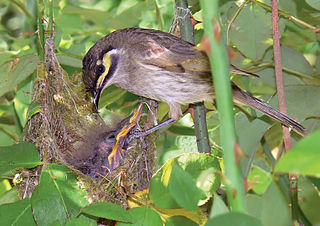 W
WIn oviparous biology, a hatchling is a newly hatched fish, amphibian, reptile, or bird. A group of mammals called monotremes lay eggs, and their young are hatchlings as well.
 W
WJatinga, a village on a ridge, is located in Dima Hasao district, Assam State in India. It is 330 kilometres (210 mi) south of Guwahati The village is inhabited by about 2,500 Khasi-pnar tribal people and a few Assamese.
 W
WThe Life of Birds is a BBC nature documentary series written and presented by David Attenborough, first transmitted in the United Kingdom from 21 October 1998.
 W
WThe Max Planck Institute for Ornithology is a non-university research institution under the sponsorship of the Max Planck Society for the Advancement of Science (MPG). It is located in Seewiesen, which belongs to the municipality of Pöcking in Upper Bavaria. The institute’s focus lies on basic scientific research in the fields of organismic biology, zoology, ornithology, neurobiology, behavioural ecology, evolutionary biology and evolutionary genetics. The institute is managed on a collegial basis, i.e. one of the two directors of the institute takes over the management for a certain time period. Since January 2020, the managing director is Bart Kempenaers.
 W
WMiles McMullan is an author, conservationist and naturalist from Northern Ireland.
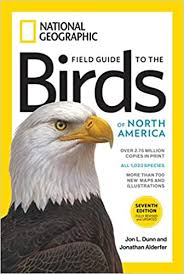 W
WNational Geographic Field Guide to Birds of North America is a reference book and field guide to birds of the United States and Canada. The first edition was published 1983 by the National Geographic Society. There have subsequently been six additional editions. The book contains information on the identification, geographic distribution, habitat preference, and vocalizations. Each species account is presented on the left, while respective illustrations are adjacently on the right page.
 W
WA nest box, also spelled nestbox, is a man-made enclosure provided for animals to nest in. Nest boxes are most frequently utilized for birds, in which case they are also called birdhouses or a birdbox/bird box, but some mammalian species such as bats may also use them. Placing nestboxes or roosting boxes may also be used to help maintain populations of particular species in an area. The modern nest box was invented by the British conservationist Charles Waterton in the early 19th century to encourage more birdlife and wildfowl on the nature reserve he set up on his estate.
 W
WOology is a branch of ornithology studying bird eggs, nests and breeding behaviour. The word is derived from the Greek oion, meaning egg. Oology can also refer to the hobby of collecting wild birds' eggs, sometimes called egg collecting, birdnesting or egging, which is now illegal in many jurisdictions.
 W
WThe term Pfeilstorch is given to storks injured by an arrow while wintering in Africa, before returning to Europe with the arrow stuck in their bodies. To date, around 25 Pfeilstörche have been documented.
 W
WSonation is the sound produced by birds, using mechanisms other than the syrinx. The term sonate is described as the deliberate production of sounds, not from the throat, but rather from structures such as the bill, wings, tail, feet and body feathers, or by the use of tools.
 W
WStomach oil is the light oil composed of neutral dietary lipids found in the proventriculus (fore-gut) of birds in the order Procellariiformes. All albatrosses, procellarids and northern and austral storm petrels use the oil. The only Procellariiformes that do not are the diving petrels.
 W
WTahiryuaq, formerly Tahiryuak Lake, is a lake located in the Canadian Arctic's Northwest Territories. It is situated in northcentral Victoria Island, north of Prince Albert Sound, southeast of Minto Inlet.
 W
WKatrina van Grouw is a British science author, illustrator, and fine artist, best known for her illustrated natural science books The Unfeathered Bird and Unnatural Selection published by Princeton University Press. She has degrees in Fine Art and Natural History Illustration. Van Grouw is a self-taught ornithologist with an interest in comparative anatomy, evolution, and the history of the natural sciences.
 W
WWeltvogelpark Walsrode is a bird park located in the middle of the Lüneburg Heath in North Germany within the municipality of Bomlitz near Walsrode in the state of Lower Saxony, Germany.
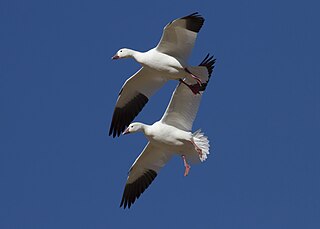 W
WWhiffling is a term used in ornithology to describe the behavior whereby a bird rapidly descends with a zig-zagging, side-slipping motion. Sometimes to whiffle, a bird flies briefly with its body turned upside down but with its neck and head twisted 180 degrees around in a normal position. The aerodynamics which usually give a bird lift during flying are thereby inverted and the bird briefly plummets toward the ground before this is quickly reversed and the bird adopts a normal flying orientation. This erratic motion resembles a falling leaf, and is used to avoid avian predators or may be used by geese to avoid a long, slow descent over an area where wildfowling is practised.
 W
W